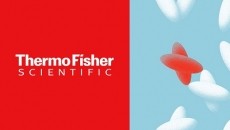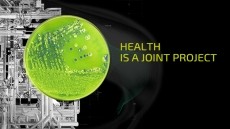Bio-succinic acid to go commercial
surprise that this has a knock-on effect to the price of raw
materials for the pharmaceutical and chemical industries. But DSM
and Roquette have developed a process that could avoid the reliance
on crude oil for succinic acid, a simple but very useful
pharmaceutical starting material, promising cheaper and greener
supplies.
This four carbon dicarboxylic acid has uses in a number of industries including polymers (clothing fibres), food, surfactants and detergents, flavours and fragrances and as a starting material for any number of chemicals including adipic acid, N-methyl pyrrolidinone, 2-pyrrolidinone, succinate salts, 1,4-butanediol, maleic anhydride, tetrahydrofuran and gamma-butyrolactone, which are used in the pharmaceutical industry.
Succinic acid has many uses in the pharma industry - too many to mention, but some examples are as a starting material for active pharmaceutical ingredients (APIs), as an additive in formulation, succinic acid monoethyl ester has been used as an insulinotropic agent, and the compound has also been used as a cross linker in drug control release polymers.
The current worldwide use of succinic acid is around 20,000 to 30,000 tonnes per year and this is on the increase by around 10 per cent a year - one reason that it has attracted another player with DSM of The Netherlands and Roquette of France announcing this week that they have combined their efforts to commercialise a fermentation-based process to produce biorenewable succinic acid from glucose and carbon dioxide.
The two companies will work together to bring online a demonstration plant in Lestrem, France, by 2009 that will be capable of producing several hundred tonnes of the chemical per year.
The technology is then expected to be applied on a commercial scale by 2011.
The use of glucose as a raw material instead of production from maleic anhydride (petrochemical source) would halve the cost of starting material (the process to convert maleic anhydride to succinic acid is also more expensive in energy terms as well).
The project is a direct result of the €90m ($132m) BioHub program that was approved in 2006 by the French Industrial Innovation Agency to promote links between companies in what is called 'white biotechnology'.
Christophe Rupp-Dahlem, a member of the project team for Roquette, commented: " In the production of bio-succinic acid DSM and Roquette will have a steep learning curve, but we believe that the microbial fermentation based bio-route we have developed is very efficient and will yield cheaper succinic acid in a more sustainable fashion than from petrochemicals ."
Commenting on why the two companies have combined their efforts towards this project he added " DSM and Roquette complement each other very well, they have similar interests as bio refineries, Roquette is providing more from the process side and DSM from the white biotechnology and downstream end ."
Rupp-Dalem went on to say that " technology has been developed to an efficiency that DSM and Roquette expect to be able to compete in and enlarge the succinic acid market" .
Green credentials The process to make the succinic acid will use simple raw materials as a feed stock, which will consist of glucose (six carbon unit) and CO2.
The process will be a simple fermentation process using an unnamed microorganism that will just produce succinic acid and no side products (if little purification is required at the downstream end, the process will be even more cost effective).
Succinic acid has been produced from glucose by various fermentative methods in the past using microorganisms such as recombinant Escherichia coli strains, Candida bombicola and Anaerobiospirillum succiniciproducens among many others, but not on a commercial scale.
Carbon dioxide is intended to be provided from nearby bioethanol facilities where fermentation of sucrose with yeast produces ethanol and the waste gas CO2 as an atmospheric emission (which can now be used in a kind of carbon capture and 'fixed' into a new molecule).
The fermentation to produce succinic acid will also, it appears, be much more energy efficient, a life cycle analysis showed that it would require about 30-40 per cent less energy than a typical chemical production process and so this will again save the atmosphere from yet more carbon emissions.
So it seems the process will be clean (no waste side products), environmentally friendly (capture CO2) and will use a relatively cheap feedstock for production (glucose) to provide a cheaper source of succinic acid into a growing market.
The chemistry is now there for all to see, and also the demand, but it remains for the economists to confirm commercial viability.















